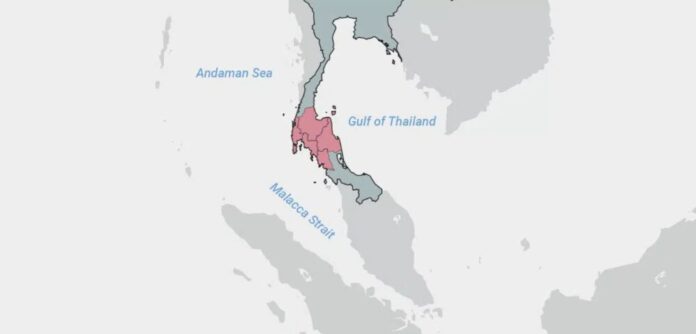The idea of the Kra Canal has been a topic of discussion for centuries, as the promise of an alternative route between the Andaman Sea and Gulf of Thailand could revolutionize shipping and reshape regional geopolitics.
While the project has never come to fruition, its potential impact keeps it in strategic conversations, particularly in light of China’s expanding influence in Southeast Asia and the Belt and Road Initiative (BRI). As of now, Thailand has opted for a different path, but debates over the canal’s feasibility and geopolitical consequences remain very much alive.
If constructed, the Kra Canal would provide a strategic alternative to the Strait of Malacca, reducing shipping distances by approximately 1,200 nautical miles.
This shortcut would save fuel costs, cut transit times, and ease congestion in the Strait of Malacca, which currently handles nearly 94,000 vessel passages annually. As global trade continues to expand, particularly in energy and container shipping, the demand for efficient and secure maritime routes is higher than ever. The canal would create an additional passage, reducing bottlenecks and alleviating concerns about over-reliance on a single trade route.
China, as the world’s largest trading nation, would stand to benefit immensely by reducing its reliance on the Malacca Strait for energy imports and trade. Currently, approximately 80% of China’s oil imports pass through the Malacca Strait, making it a critical vulnerability in times of geopolitical tensions.
Diversifying maritime routes through the Kra Canal could enhance China’s energy security, providing an alternative supply chain for crude oil and liquefied natural gas (LNG) imports from the Middle East and Africa.
For China, the Kra Canal would address its “Malacca dilemma“—the vulnerability of its maritime trade routes to potential blockades by rival naval forces, particularly the United States.
A hypothetical China-controlled canal would enhance Beijing’s control over its supply chain and maritime security, while boosting its geopolitical influence in the region. Notably, the canal would enable China to establish a stronger presence in the Indian Ocean, allowing the PLA Navy greater operational flexibility and enhancing its ability to protect critical sea lanes.
The United States and its allies, particularly Singapore and India, oppose the canal’s construction owing in large part to these geopolitical considerations.
A China-dominated Kra Canal could reduce Singapore’s significance as a shipping hub, potentially diminishing its economic and strategic value. Singapore, which benefits heavily from transshipment fees and trade facilitation, would likely experience economic losses if traffic were diverted to a new canal.
India, which has growing concerns over China’s increasing influence in the Indian Ocean, sees the Kra Canal as another strategic asset that could strengthen China’s maritime footprint near its sphere of influence.
As a countermeasure, Washington is supporting Thailand’s land bridge project, which offers an alternative trade corridor without directly benefiting China’s strategic interests.
The land bridge project, consisting of highways, rail networks, and deep-sea ports, provides a non-maritime alternative for trade while maintaining the regional balance of power. The United States has also increased maritime cooperation with Thailand, Indonesia, and the Philippines to ensure the continued security and open accessibility of the Malacca Strait.
Source: Geopolitical Monitor












